India’s golden triangle showcases the best and worst aspects of the country, but should you prioritize a visit? In my eighth letter to my son, I break down India’s popular tourist circuit.
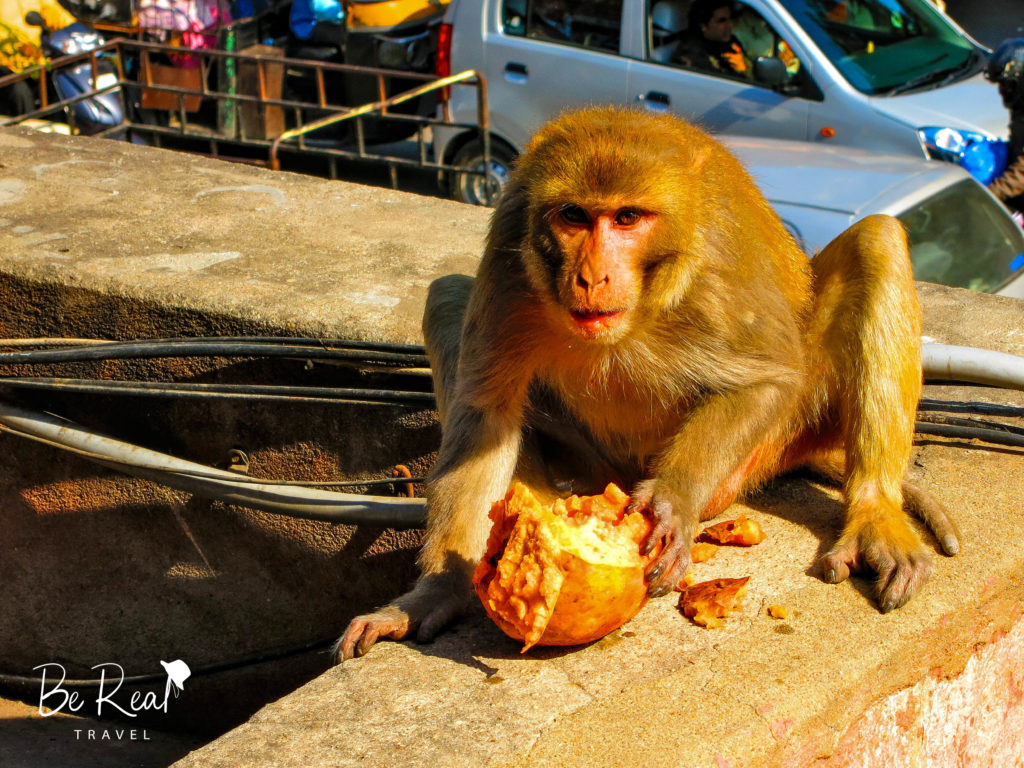
Dear Kid,
While growing up in small-town America, I had very limited exposure to anything related to India. There were no Indian families in our neighborhood. There were no Indian kids at my school. There were no Indian restaurants in our county. The only Indian people that I saw while growing up were those working at 7-Eleven (side note – I was a huge Slurpee guy; I spent my first paycheck on a large Slurpee and brain freeze straw) and Apu on The Simpsons.
In 2013, the evolution of my perception of India kicked into high gear during my three-week trip to India for graduate school. I spent time in the three cities that compose the India tourist circuit dubbed the golden triangle. The circuit is named as such because Delhi, Agra, and Jaipur form a triangle. The Golden Triangle gives tourists a taste of two unique cities (Delhi and Jaipur) and the country’s most popular tourist attraction, the Taj Mahal (Agra).
There are over a billion Indian people that could offer you a more comprehensive perspective on what it’s like in India. What I can offer you is the honest perspective of a gringo that lived it up during his visit to India. Through twenty-two pages of notes, I documented my observations. I usually don’t journal while traveling, but India really tripped me out.
In this letter, I break down the awesome and the agonizing parts of my trip to India’s golden triangle.
THE GOOD
The food slams
In all but one of my letters so far, I’ve listed food under “THE GOOD.” I do that again here, except this time, I talk about why Indian cuisine is my absolute favorite in the world.
Indian cuisine is my favorite because of the naan-sauce combination. There are other Indian staples that I love, but naan lathered in butter chicken sauce takes me to pleasure town like no other dish does.
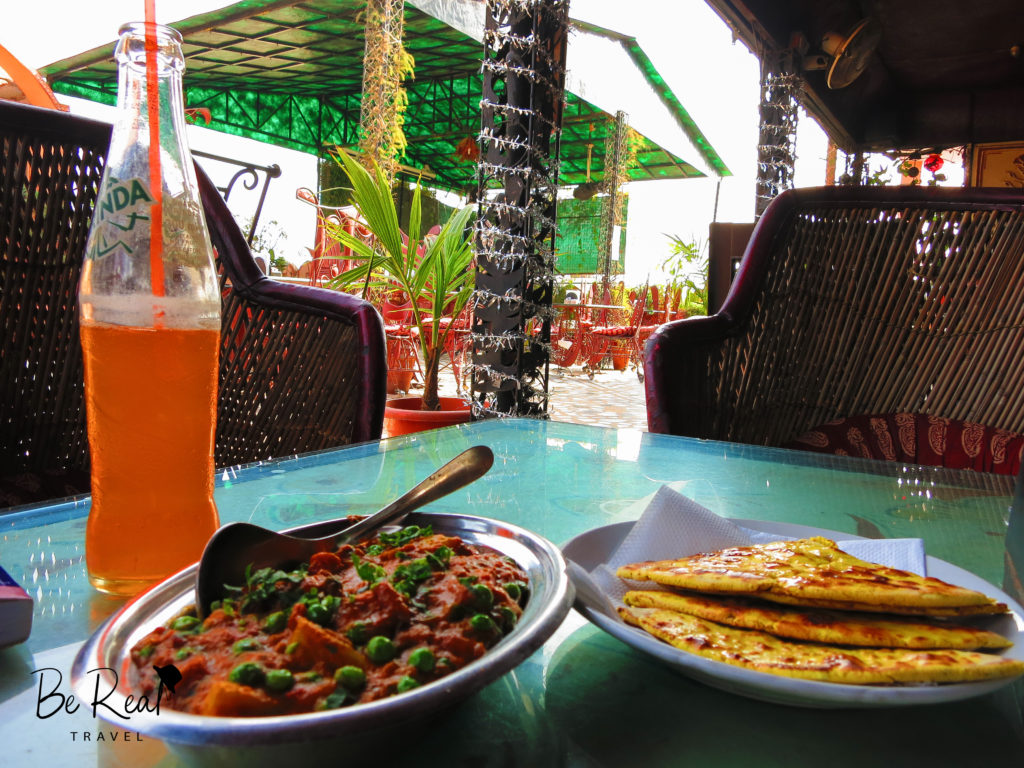
Naan is my favorite member of the greater bread family. Baked in an oven, this leavened flatbread is the perfect marriage of crispy and chewy. As if the splendid texture wasn’t enough, flavor is often infused into naan through the addition of can’t-miss ingredients like butter, garlic, and basil. Naan is bomb in itself, but its thick and sturdy nature makes it the perfect vehicle for scooping up those thick Indian sauces.
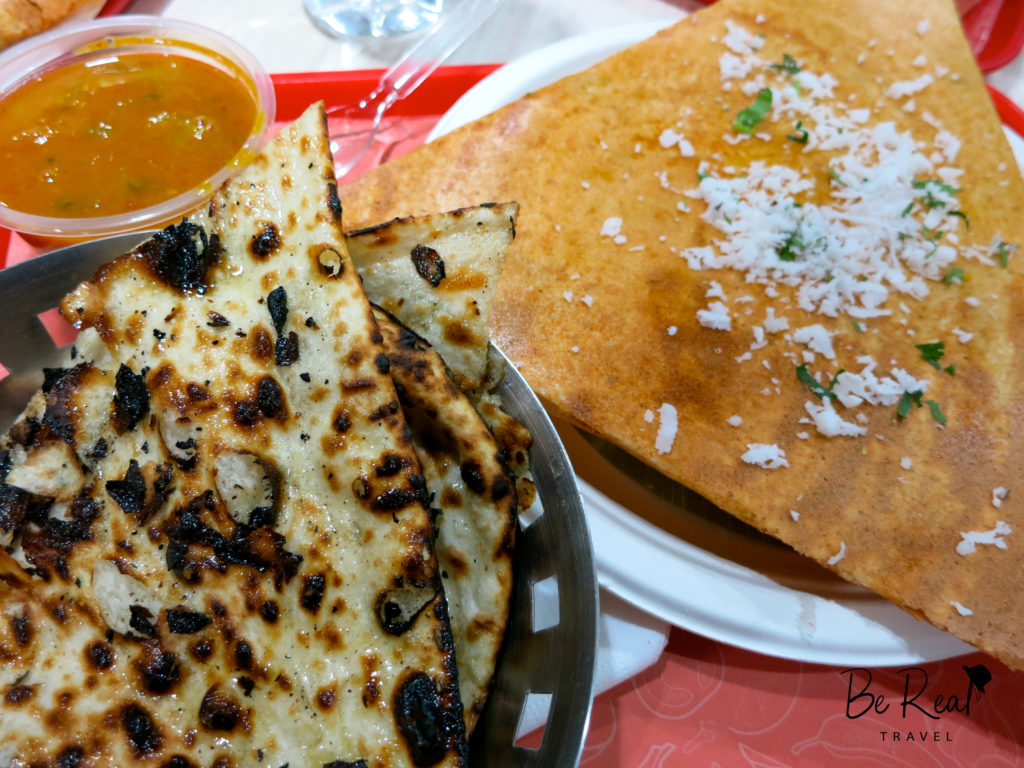
Indian cuisine features a plethora of delectable sauces and curries, but Indian butter chicken sauce is the nectar of the gods. This velvety sauce is tomato and onion-based, though spicing of the sauce varies. Not that I’ve actually done this [yet], but if I had to chug a cup of butter chicken sauce, I honestly wouldn’t be that mad because it’s that good. It’s not sweet in a “This is too much” kind of way, but rather in a “I can keep scarfing this down with naan until my belly bursts” kind of way.

I dare you to name a better food pairing than naan and butter chicken. Such lethal naan-sauce combinations are the foundation of why Indian food is my favorite, but several other cuisine staples solidify my opinion.
As I mentioned in my letter about New Zealand, I love eating lamb. Indian cuisine approaches lamb differently than New Zealand does (the former drenched in sauce vs. the latter merely seasoned), but both approaches result in a blissful dining experience.
Cheese (paneer) and potatoes (aloo) are quality role players in Indian cuisine. Paneer, a non-melting, soft cheese, reminds me of mozzarella in that both are white cheeses that even a picky child would have no problem chowing down. Aloo adds another starchy texture to the mix and wonderfully soaks in the different sauces and spices of the dish.
I could write a lot more about why Indian cuisine is my favorite. Instead, I’ll end with a list of other Indian staples that you should probably seek out because they’re also bomb: tandoori chicken (so simple, so good), samosas (one of the appetizers at our wedding!), vindaloo (spicy sauce), korma (creamy sauce), paratha (another outstanding member of the greater bread family), and biryani (so good that your Lola made a biryani dance).
Here are my “cuisines of the world” power rankings:
1. Indian (Heavenly when done well)
2. Japanese (I’m a big bento guy; your mom is a big sushi gal)
3. Argentine (tough to beat the steak-empanadas-chimichurri trifecta)
4. Mexican (it’s really hard to F up Mexican food)
5. Italian (Italy rivals Taiwan for king of “places I would move to if my goal was to become obese”)
Honorable mentions: Lebanese (might be higher if more widely-available for me to explore), Ghanaian (again, had to get my TIA reference in), Chinese (lumping Taiwanese in here)
Delhi is a fascinating blend of old and new
One thing that I love about travel is exploring different worlds that are within close proximity to each other. Prime examples include San Francisco (eclectic neighborhoods), Rio de Janeiro (urban life and beach action), and the greater Portland, Oregon area (hipsterville and waterfalls).
My favorite thing about India’s capital territory of Delhi is the blending of the old and new. One minute, you can be shopping at a gaudy, high-end mall, then a short car ride later, be standing in the shadow of an ancient tower.
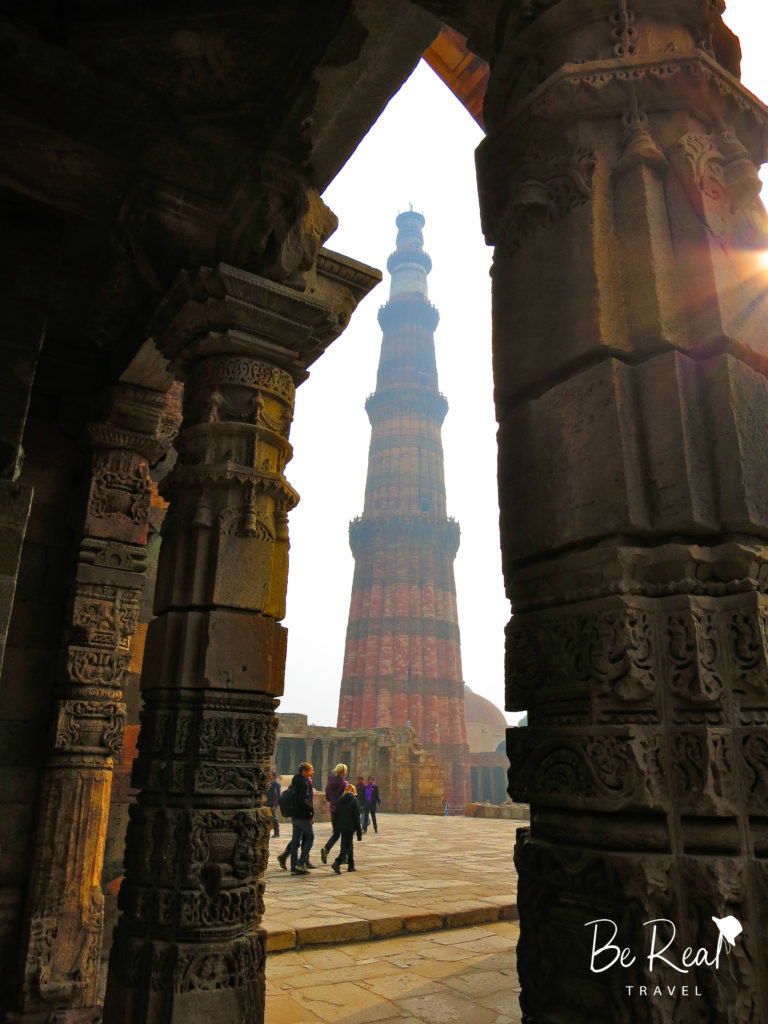

On top of bringing that ancient and modern action, Delhi brought some amusing bizarreness. During my week in Delhi, I got a ten-dollar head massage that involved a barber roughhousing my head like I had insulted his mother (not a pleasant experience). I visited the Akshardham temple complex where I felt like I was in Disneyland except with shrines and a pervading odor of stinky feet (visitors have to take their shoes off). I held a snake whose teeth were removed by a snake-charming peddler (the whole time, the peddler blew the same note on a flute over and over). India’s capital was often weird, but mostly fun.
The Taj Mahal lives up to the hype
There’s a lot of hype around the Taj Mahal. It’s one of the seven wonders of the modern world. It’s the image that many people conjure when they think of India. It’s the subject of countless photographs and Instagram posts. Here’s the thing though – the Taj Mahal lives up to the hype!
I took a day trip to the Taj Mahal in Agra, a city located about a three-hour drive south of Delhi. To enter the attraction, I waited in a long, Disneyland-in-the-summer-like line (that’s two Disneyland references already; your Opa must be loving this!). I remember very clearly the moment when I finally caught my first glimpse of that towering, white marble mausoleum through the fog. I felt butterflies in my stomach. My first thought was, “Unreal…it looks like a giant postcard.”
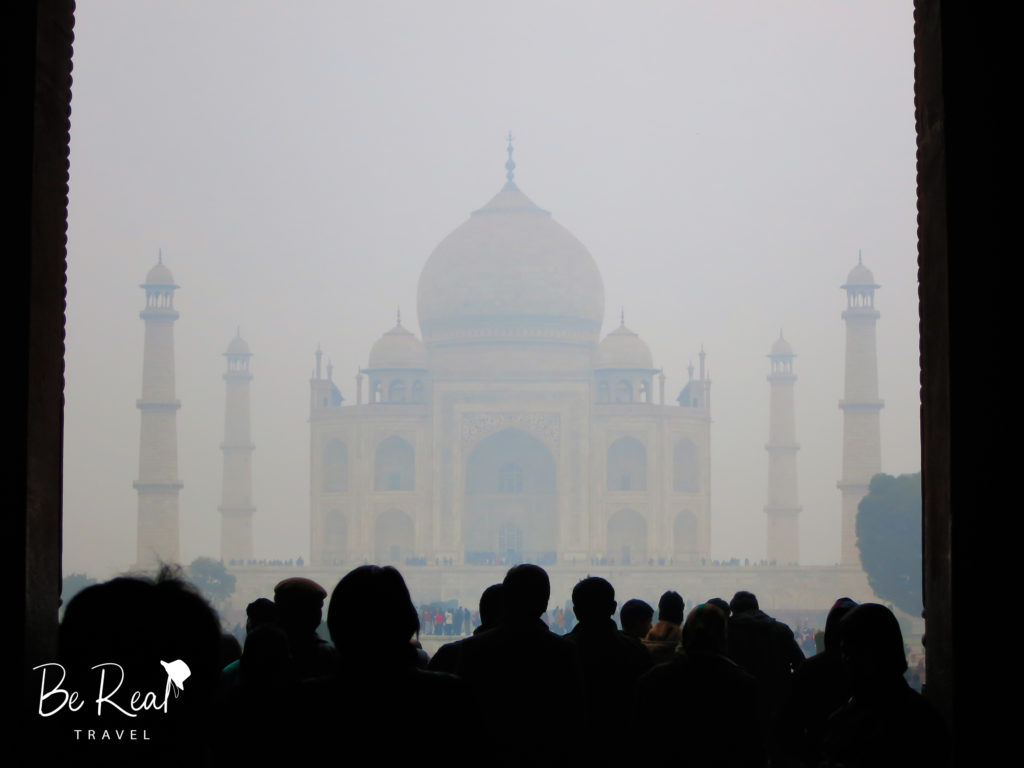
Visiting the Taj Mahal was surreal. It looked massive whether I was standing right below it or hundreds of feet away. It was designed in a way that turns cliché words like “stunning” and “elegance” into reality. I found it especially striking because there are no structures in the western hemisphere (where I had done most of my traveling up until that point) that look anything like it.

The Taj Mahal’s surroundings added to the grandeur of the scene. A guesthouse and mosque, both of which were imposing in their own right, were located on opposite sides across from the mausoleum. In the middle of the garden sat a pool. At certain angles, the water depicted a dream-like reflection of the Taj Mahal.
Pure sky sat behind the Taj Mahal. The fact that there weren’t mountains or other structures visible behind the mausoleum added to the majesty of the scene. It’s as if the Taj Mahal was at the end of the world.
Like most things in life though, the Taj Mahal wasn’t all sunshine and rainbows. When I visited, the interior of the Taj Mahal was being renovated (e.g. no decor, unfinished walls). Also, there were a ton of other tourists wandering the grounds; this was very annoying from photo-taking (“How do I get a shot of this thing without a dozen Indian people in my photo?”) and serenity (“There are way too many people here…”) perspectives.
Nonetheless, the Taj Mahal is the most beautiful structure that I’ve ever seen. If the duration of admission wasn’t limited to three hours (by the way, the preceding article notes that up to 50,000 people visit the Taj Mahal in one day – crazy!), I could’ve happily basked in that glorious scene for the entire day.
Jaipur is enchanting
After finishing my graduate school project in Delhi, I took a solo trip to Jaipur, the capital of the Indian state of Rajasthan. Jaipur is unlike any other city that I’ve visited. The city isn’t located in the middle of nowhere, but it did feel like I had been transported to another world. India isn’t in the Middle East, but Jaipur was giving me some serious Aladdin vibes. I was constantly in awe of the city’s distinctive architecture, dusty-pink-hued buildings (Jaipur is nicknamed the “Pink City”), and [very] old school palaces and forts.
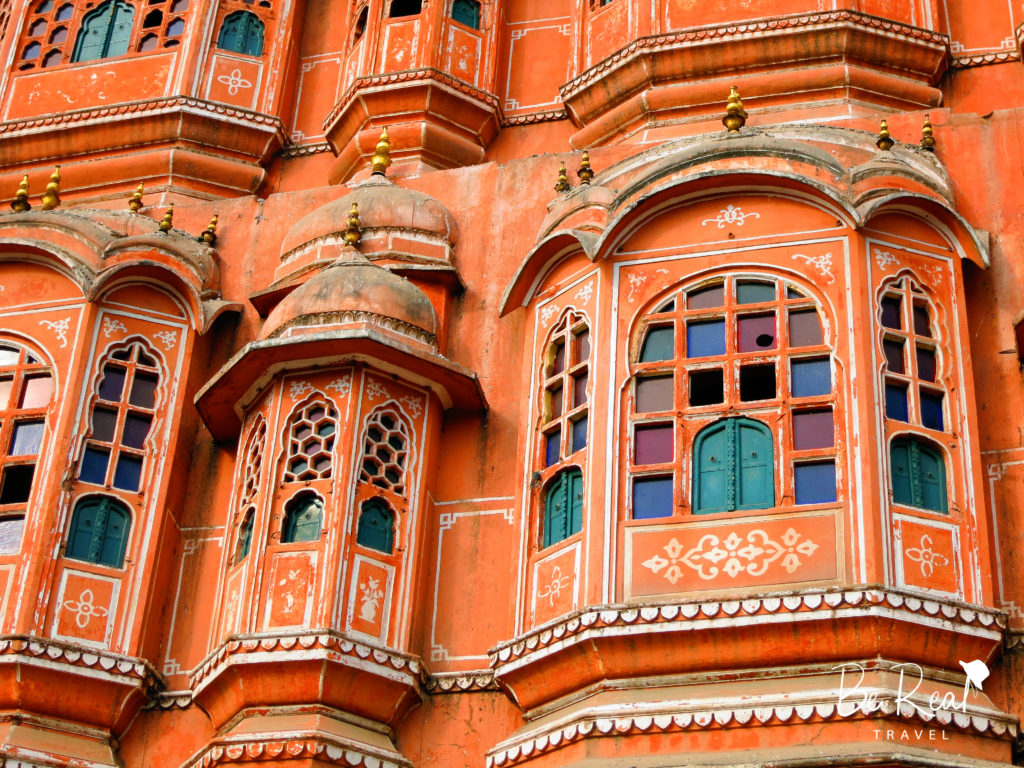
The Hawa Mahal (a honeycomb-looking palace in Jaipur) puts the “pink” in the “Pink City”



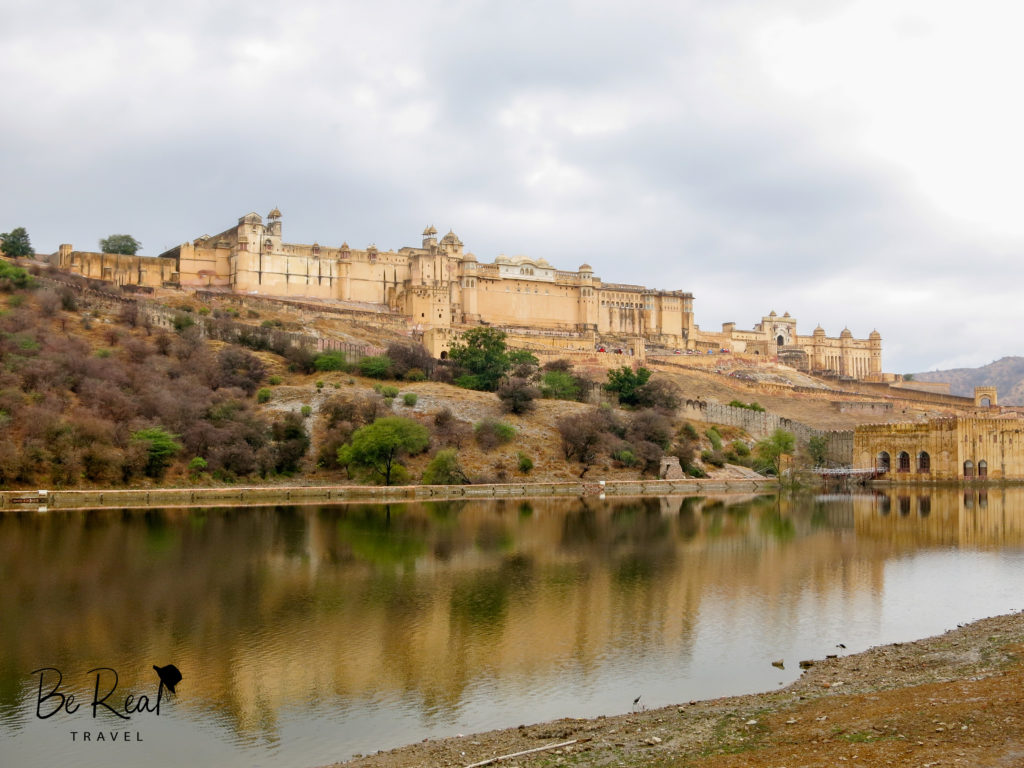
Indian entertainment is a blast
Prior to my trip to India, I had watched zero Indian television shows or movies (Slumdog Millionaire, a movie which I love and takes place in India, is actually British – By the way, the banger Jai Ho was our wedding party’s entrance music!). After watching several Indian movies and TV shows during my trip, I came away with a greatly-elevated appreciation of Indian entertainment.
I find Indian entertainment to be over the top, and that’s exactly why I like it. Almost every night in my hotel room, I watched a show called Dil Dosti Dance in which a group of teenagers dealt with youth drama while occasionally breaking into song and dance. It was basically an Indian-musical version of Boy Meets World.
In Jaipur, I watched the Bollywood movie Dabangg 2 at the Raj Mandir cinema. The titular character beat the crap out of overmatched bad guys and performed in elaborate dance numbers. It was basically an Indian-musical version of Shaft (sensing a theme here?). I was bewildered as the crowd stood up, clapped, and cheered on the action.
Another piece of Indian entertainment that I thoroughly enjoyed (though not related to my trip to India) is the Baahubali saga. While you gestated inside your mother, we watched both of these blockbuster South Indian action movies (Baahubali – The Beginning and Baahubali – The Conclusion) on Netflix. I loved both movies. I felt like I was watching the roided-out, Indian lovechild of Lord of the Rings and Game of Thrones.
A bunch of other good stuff
- Almost everything is dirt cheap – As I write this in 2020, according to Numbeo, the cost of living in India is ~68% lower than that in the United States. Many costs relevant to tourists (e.g. food, accommodation, public transportation) are dirt cheap in India. This is obviously devastating for many locals that are trying to scrape by on minuscule wages, but advantageous for visitors seeking cheap-ass grub, lodging, and transportation.
- Wild animals roam the streets – Although urban wildlife poses serious safety hazards (side note – I first learned about rabies from a highly-emotional episode of Dr. Quinn Medicine Woman), I was thrilled to see animals roaming the city streets. I was officially living my best life when I saw monkeys loitering about the cityscape in Delhi. Camel and pig sightings in Jaipur further stoked the flames of my urban wildlife excitement. Also in Jaipur, I went into full-on “mind-blown” emoji mode when I saw an elephant pulling a cart alongside car traffic.


- English is widely spoken – Many people in India speak English (the country’s official languages are Hindi and English). Unlike in Taiwan, it was easy enough to order food, ask for directions, and connect with locals in India. As expected, English proficiency seemed to be correlated with age (the younger the person, the better the English).
- Luxury hotels are on point – My hotel in Delhi was very nice, but I was especially impressed by my hotel in Jaipur. As you probably know, your Lola worked for the Marriott, so I milked that oh-so-clutch friends and family discount rate for over a decade. No exaggeration – The Marriott that I stayed at in Jaipur, to this day, is both the cheapest and the nicest Marriott that I’ve ever stayed at.
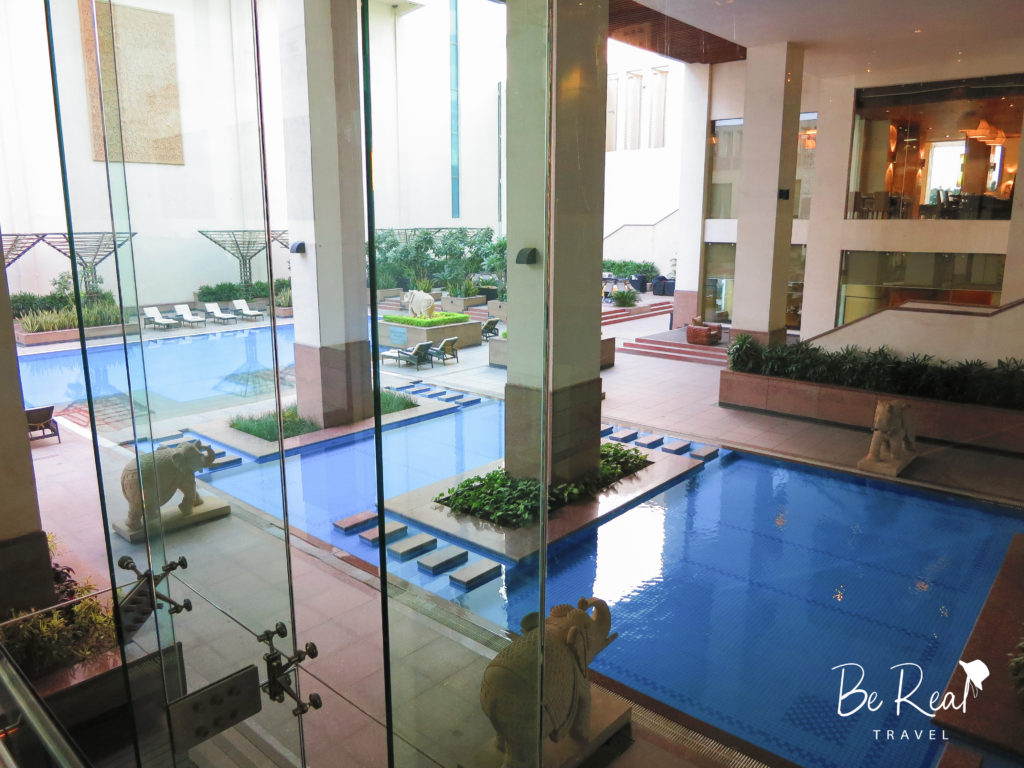
- Indian people are cool – In working with Indian people throughout my education and career, I’ve found that Indian people are pretty cool! A lot of Indian people are just as plugged into American pop culture as I am (I have bonded with many an Indian over Star Wars and Game of Thrones). During my trip to India, I had a great time learning about Indian culture by picking the brains of taxi drivers, tour guides, and my project teammates that attended an Indian business school. I dig that down-to-earth, fun-loving-sense-of-humor, Indian spirit.
- American restaurant chains are common – Many travelers scoff at the notion of dining at an American chain while traveling abroad (“Why – you can just eat crappy McDonald’s food at home!”). There are two reasons why I vehemently hold the opposite view. First, when I travel somewhere for an extended period of time, I like taking a break from eating the local cuisine in favor of something familiar (and use it as a reason to justify eating bomb-ass, unhealthy fast food, which I very rarely eat while at home). Second, I love exploring the menus at American restaurant chains abroad. From foreign naming conventions to menu items adapted to the local market, I revel in this culinary experience that is so familiar and at the same time so different than what I’m used to.
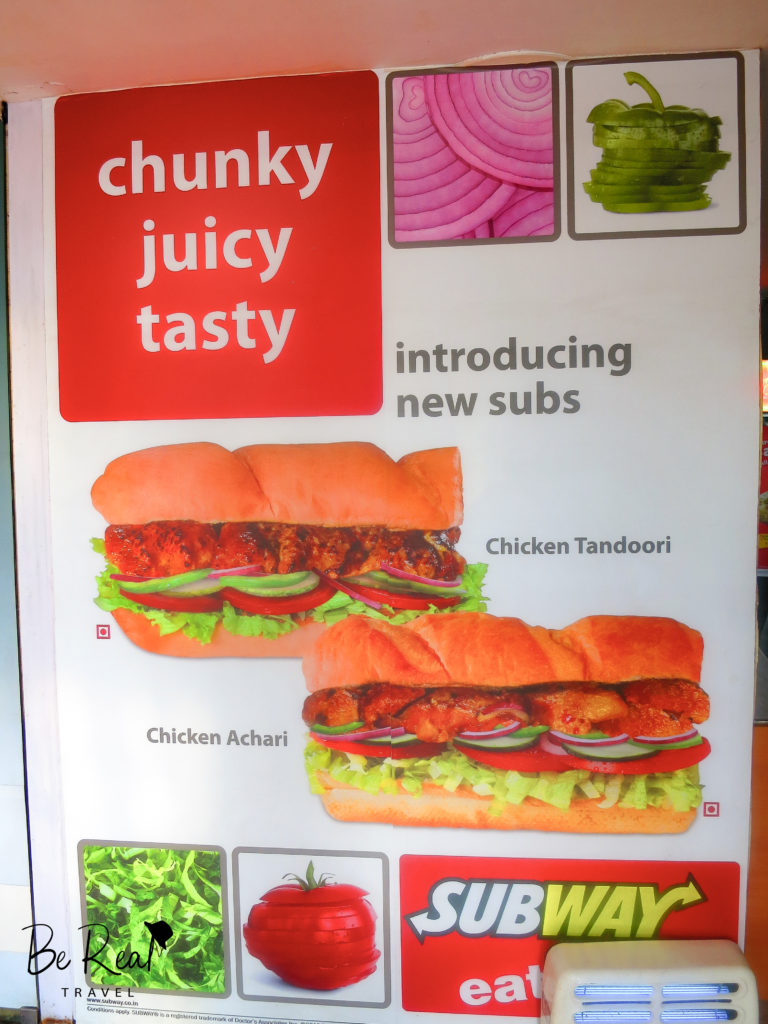
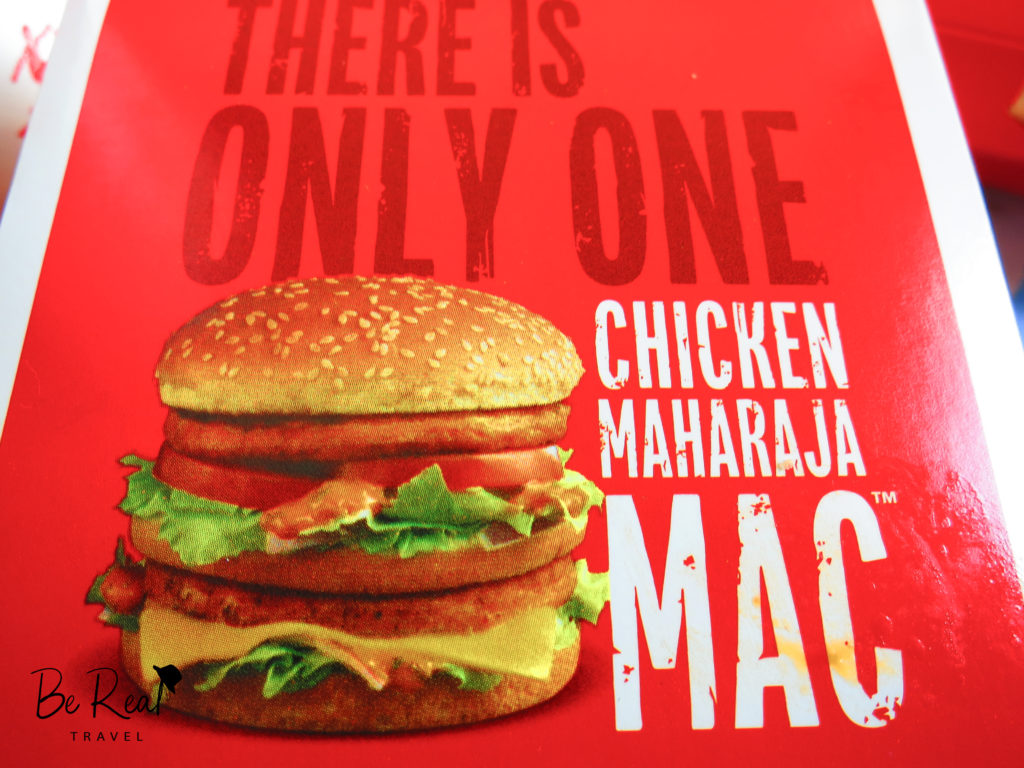
- There are bargaining opportunities galore – I genuinely enjoy bargaining for souvenirs abroad. The Ghanaian mask hung up at home is one of the first items that I successfully bargained down! I get high off of the thrill of the hunt (going back and forth with a seller on price). I reap a significant amount of satisfaction from the end result (hearing the seller reluctantly respond, “Okay,” in response to my offer). In India, many street markets and boutique shops don’t display prices and spout abnormally-high prices at tourists. Remind me to tell you the story about how I acquired the Indian painting hung up at home (the nighttime one with the elephants). It’s a doozy that involves my no-shame bargaining skills (of which your mom can attest); a shop owner storming away from me out of rage; and a wide-eyed Indian salesman with a Jheri curl that reminded me of Kanye West.
THE BAD
There’s litter everywhere
In my previous letter, I wrote about how locals in Taipei consider it their duty to keep their city clean. During my trip to India, I saw zero indication that the same is true of locals in India. Of all of the countries that I’ve traveled to, India had, by far, the worst litter problem. Use of the word “litter” here is very generous considering the volume of litter, and that the litter sometimes entailed rancid stenches and fecal matter.
Here is a sample of top Google search results for “India dirty”:
- India is filthy
- Even by the standards of poor countries, India is alarmingly filthy
- Why is India so dirty?
- How did India become so incredibly dirty?
- 5 Reasons Why India is So Dirty
I will never forget the moment when I began to understand why India is so dirty. While riding in a taxi, my driver nonchalantly threw a Styrofoam cup out of the window.
Perplexed, I asked, “Why did you throw that trash out of the window?”
The driver chuckled, pointed to the window, and replied, “Trash can.”
I grew up in the clean streets of Californian suburbia where people didn’t litter. My teachers hammered home the point that litter should be picked up and trash should be thrown into trash cans. It was a no-brainer for me to treat the environment with respect.
I’m guessing that similar principles are not taught in Indian schools. If these principles are taught, they are largely ignored. It’s part of Indian culture to believe that it’s okay to throw trash anywhere. I mean, think about it. If you grew up in a place littered with trash, surrounded by friends and family that regularly threw trash on the ground, what would you do? Either way, my trip to India made me appreciate the pristine streets of Taipei (and frankly, of the majority of places that I’ve traveled to) that much more.
Food hygiene is a thing
Eating is a risky proposition in India. India is the only country that I’ve traveled to where locals use the word “hygienic” as an adjective for food. When food is described as hygienic, it means that there is minimal risk of getting sick from eating that food. For hygienic food, the preparation environment is sanitary, the water used for hand washing and food rinsing is clean, and the people that handle the food wash their hands properly. While Indian locals’ digestive systems are used to processing “non-hygienic” food, this is definitely not true for many gringos like myself.
In most of the countries that I’ve visited, locals encouraged me to try signature dishes from their respective cultures’ cuisines. India is the only country where many locals discouraged me from eating dishes from certain eateries because they didn’t want me to risk getting sick. Perhaps they were being overly cautious or didn’t want to be the person that got the gringo sick. Either way, I appreciated their guidance.
Whether I’m home or halfway across the globe, I like trying anything and everything when it comes to food. Normally, I ignore “be wary of street food” guidance, but I didn’t take the risk in India because I was motivated to crank out quality work for my graduate school project (something that would’ve been very difficult if I had to worship the porcelain god every ten minutes). If you do visit India and go all out on the food, just be sure to bring Imodium!
Personal space is hard to come by
I pride myself on being patient and adaptable when it comes to foreign cultures. Alas, everyone has their Kryptonite. Mine is the lack of respect for my personal space. I can tolerate cultural aspects that many Americans might find challenging (e.g. slow-moving cultures, indirect cultures, “people always show up late to meetings” cultures), but if someone needlessly brushes me, my steadfast tolerance starts to give way.
I suspect the reason why there is a relative lack of respect for personal space in India has something to do with the country’s high population density. An article from Times of India about how Indians treat personal space cites this quote from a book called Supermarketwala: Secrets to Winning Consumer India:
“When it comes to queues, Indians actually feel reassured by a certain amount of crowding – even a respectable amount of personal space is abhorrent to their competitive instincts.”
This quote is consistent with an experience that I had well before my trip to India. As I stood in the customs line at an international airport, an Indian family stood behind me in line. Every time that I moved forward, the family would stand so close to me that they would brush up against my backpack. Fed up, I [childishly] took the passive-aggressive approach and gently twisted my body back and forth so that my backpack made even more contact with them. They didn’t take the hint and back off though. It’s almost as if they didn’t notice that I was swinging my backpack into them at all.
During my trip to India, I was irritated by this cultural aspect more times than I could count. One evening after work, I stood on a low-traffic sidewalk waiting for a taxi . The sidewalk was big enough to fit four or five people widthwise. In the span of about ten minutes as I read my guidebook, a handful of people passed by me at uncomfortably-close distances. Two people actually bumped my mother F’ing guidebook. There was plenty of room for each of these people to avoid passing by me at such a close distance. The first person that bumped my guidebook looked back, said something, and genuinely looked apologetic (though if she was so apologetic, and given how wide the sidewalk was, why didn’t she move the F over in the first place?). The second person that bumped my guidebook showed no remorse and kept walking as if nothing out of the ordinary had happened. I don’t care what culture you’re from; that’s a straight-up dick move and still baffles me to this day.
I reached my boiling point while I was exiting the Amber Fort near Jaipur. The pathway out was narrow, comfortably fitting two people widthwise / three slender people if squeezed together. The path was built on top of a water garden (there was water on both sides of the path). Two teenage girls approached me from the opposite direction. I expected one of the girls to hang back so that we could pass without touching each other. As we drew nearer, the girls continued to walk side by side, which meant that I had minimal room to squeeze through when it came time to pass them. At this point, I was already fed up because of all of the other times on my trip in which people brushed me instead of moving out of the way. As the girl (on the inside) and I brushed by each other, I may or may not have thrown in a little extra elbow action. She angrily looked back and let out a yelp (that I perceived as her communicating, “What the hell?!”). I looked back, threw up my hand, and yelled, “WELL MOVE OVER!”
First off, don’t be like me, kid (be a gentleman and control your frustration). Second off, as I write this, much of the world is battling the Coronavirus pandemic. Many are strictly following a “Keep at least six feet away from other people to avoid transmission of the virus” rule. How challenging must it be for Indians right now? They’re used to keeping zero distance between themselves and others, and now they have to keep six feet away from each other? Talk about a culture shift!
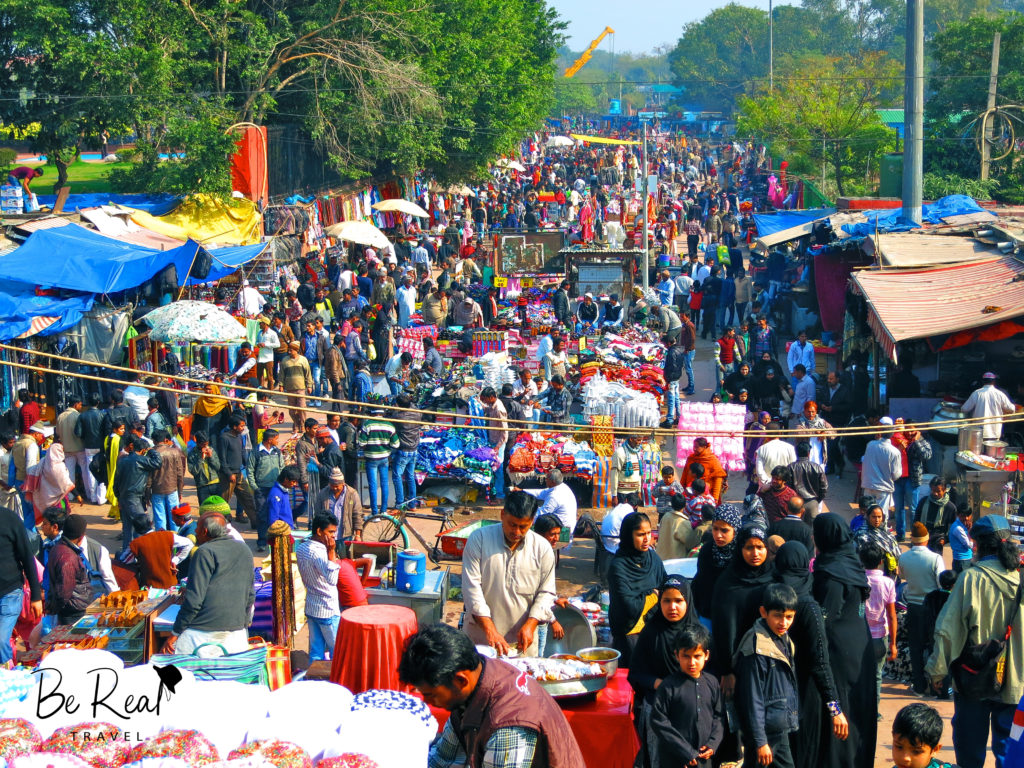
A bunch of other bad stuff
- The city roads are terrifying – Prior to my trip to India, I had traveled to countries where the driving was scary (I’m looking at you, Ghana and Argentina). India took the “Holy crap, this is crazy!!” moments to another level. First, designated lane boundaries are pretty much ignored. Second, the amount of distance between two cars that is considered comfortable or safe is significantly less than what I’m used to in the United States. The result is a nightmare of cars narrowly missing each other as drivers jockey for position across lane-less roads.

- Food spiciness is no joke – India doesn’t play when it comes to spicy foods. I generally don’t seek out flaming-hot food, but I can handle most food deemed spicy in the United States. During my mornings in India, I tried some of the local breakfast dishes. This resulted in a few rough mornings in which I had to power through spicy meals. I sat there as the sun rose, thinking, “It is way too early for my stomach to be on fire,” and, “I’m really going to regret this menu item selection in about six hours.” Looking at my notes from the trip, there were half a dozen times in which I noted how ridiculously spicy a dish was. There was one time that I noted that a dish was so spicy that I had to take a ten-minute break before continuing my meal.
THE BOTTOM LINE
My visit to the golden triangle helped me blow past my naively-limited perspective of India. Through the food, sights, and locals, I gained a much greater appreciation of India’s vibrant culture.
India’s golden triangle gives visitors a taste of the country’s jarring capital, jaw-dropping ancient structures, and otherworldly Rajasthan region. Indian food is straight BOMB, monkeys and elephants grace the rooftops and streets (respectively of course), and prices are dirt cheap.
Unlike New Zealand, India is definitely not for everyone. The driving is terrifying, lack of personal space can be infuriating, there’s litter and undesirable odors almost everywhere that you turn, and the “Montezuma’s Revenge” risk is a legitimate concern for us weak-stomached gringos.
If you can tolerate the cons, I highly recommend that you prioritize a trip to India’s golden triangle. Out of all of my travels so far, I never felt like I had been transported to another world more than I did in India. So much (from the architecture, to the flavors, to the culture) is so foreign compared to the United States. It was an exhilarating trip.
Love,
Dad
P.S. I worked on this letter as I finished my second half of paternity leave and you learned to crawl! As I write this sentence, you’re knocked out in your crib, probably exhausted from crawling all over the place. Key items that helped entice you to crawl include my camera, my sunglasses, your X-Men Wolverine Funko Pop! figurine, and a level instrument.
